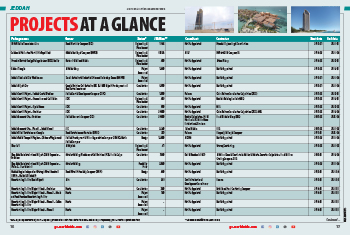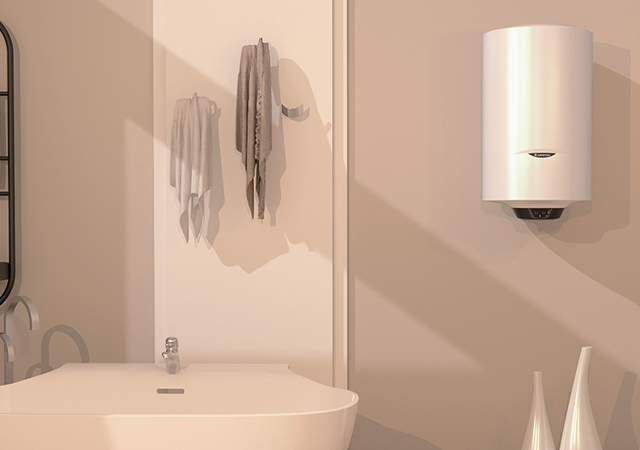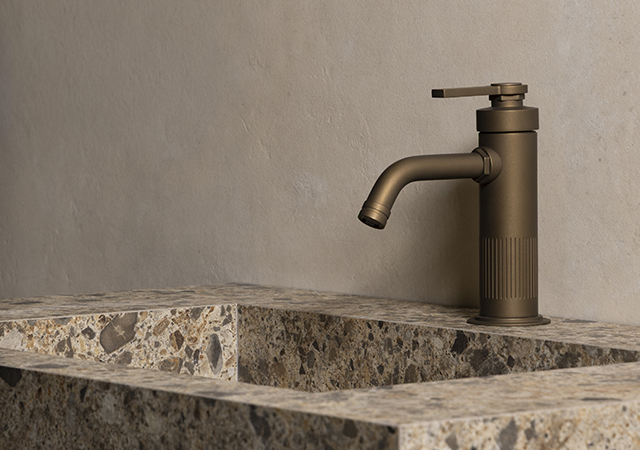 Trimble’s R8 GNSS system.
Trimble’s R8 GNSS system.
The US-based Trimble Navigation, a leading innovator of global positioning systems technology, has introduced a new enhanced version of its GCS900 3D Grade Control System.
“The Trimble GCS900 Grade Control System Version 10.0 is now available from our construction division dealer network worldwide,” says Lin Lin Ho, a spokesperson for Trimble Navigation.
This new improved version is designed to provide contractors with increased flexibility and ease-of-use by expanding both Trimble’s bulk earthworks and finished grading solutions,” he adds.
Some of the new features in Version 10 include the ATS Construction Total Station configuration for dozers, the single GPS configuration for dozers, and the new auto side shift option for motor grader blades. Additionally, the new graphical Trimble CB430 in-cab display demonstrates Trimble’s continued commitment to developing easy-to-use, highly flexible productivity solutions. “Using the Trimble GCS900 allows the contractors to use a common platform across their entire fleet for all phases of earthmoving, significantly improving productivity, right from mass excavation to finished grading,” Ho points out.
Additional dozer configurations
The updated Trimble GCS900 offers contractors two additional dozer configurations – the option to use either the ATS Construction Total Station or the Single GPS.
He elaborates: “The Trimble GCS900 on a dozer with the ATS Construction Total Station is designed for contractors who need the flexibility to move from site to site frequently, work in confined spaces, or perform high-precision grading with their dozer. The ATS allows contractors who operate independently or frequently move between projects to move both the dozer and the GCS900 Grade Control System from site to site quickly and easily. The ATS also offers a 3D grading solution for jobs where GPS is not a viable technology, such as in urban canyons, forested areas, or on job sites with numerous overhead obstructions such as overpasses. The total station also provides grade control to +/-10 mm, making it ideal for high-precision work.
“The Trimble GCS900 on a dozer with Single GPS is ideal for contractors who require a cost-effective 3D grade control solution for site preparation and bulk earthworks. The option is easily upgradeable to the GCS900 for dozers dual GPS or ATS systems as economic or jobsite requirements change. The Single GPS system is ideal for larger site projects and long-term, multi-phase projects. The GCS900 on a dozer with Single GPS provides grade control to +/-30 mm. When utilised with the Trimble GCS900 laser augmentation option, the solution for dozers can also be used for high-precision grade control.
Auto side shift option
Auto Side Shift is a new add-on option for grader blades that controls blade slide shift for the GCS900 system, being suitable for grading linear sections such as curbs, centerlines, and other alignments. This option controls the side shift of the grader blade, automatically following the selected alignment. The option maximises alignment accuracy, especially around curves and reduces operator fatigue by eliminating the need to manually control the blade. The results are higher-accuracy grade control along alignments, improved operator awareness, and increased grader operational safety, Ho points out.
CB430 graphical display
The new Trimble CB430 in-cab graphical display meets the needs of today’s earthmoving contractor. Designed to the most extreme industry standards, the modernised CB430 features a large, daylight-readable display, with dimmer control for either day or night operation, and a simple user interface for easy operation. The Trimble CB430 offers significantly more processing speed for faster screen redraw, larger design files and improved software performance, he says. An internal power supply backup preserves data integrity in the event of sudden external power loss on the machine.
A new, easy-to-use mounting system allows even greater placement options in the machine cab. The new mounting system also allows easy display removal for added security or moving between machine systems.
Digital design files are transferred to and from the Trimble CB430 through the environmentally-sealed data card slot using an industry-standard data card or wirelessly from the site office.
“Trimble is committed to the ongoing development of easy-to-use productivity-enhancing positioning solutions for the contractor, no matter where they work,” says Jim Veneziano, general manager for Trimble’s Construction Division. “The new in-cab graphical display available in 15 languages provides machine operators around the world with a user-friendly interface. The expanded positioning sensor options give contractors a high degree of flexibility to select the right solution for their specific job requirements and work environment.”
Survey systems
Meanwhile, Trimble has also recently launched two new products as part of its Connected Survey Site model – the Trimble R8 GNSS system and Trimble NetR5 reference station receiver with added global navigation satellite system (GNSS) capabilities.
The positioning products with Trimble R-Track technology support GPS L2C and L5 signals as well as Glonass, adding greater flexibility and more robust signal tracking to provide a seamless and streamlined workflow for all the critical phases of surveying.
“With the world’s GNSS in constant development, surveying businesses both small and large, can be confident that an investment in a Trimble survey solution is protected and continually enhanced at the system level,” says Jürgen Kliem, general manager for Trimble’s survey division. “Trimble, already proven in GPS technology, is committed to supporting GNSS, whether it be next-generation GPS, Glonass or new satellite-based signals in the future,” he adds.
Trimble R8
The Trimble R8 GNSS system is a multi-channel and multi-frequency GNSS receiver, antenna, and data-link radio all-in-one compact unit that combines advanced receiver technology and a proven system design to provide maximum accuracy and productivity. Powered by an enhanced real-time Kinematic engine, the R-Track technology in the Trimble R8 GNSS now supports both the next-generation GPS L2C and L5 signals and Glonass L1/L2 signals. The GNSS signals are capable of providing surveying professionals with real field benefits.
“From the powerful Trimble field software to the receiver, the Trimble R8 GNSS system’s overall design is field-proven. As a rover, it is rugged, lightweight and cable-free for unsurpassed ergonomics in the field. As a base, it is flexible and also cable-free and can be used as a base or rover,” says Ho.
The Trimble R8 GNSS system’s flexible communication options include an internal 450 MHz radio option for use as a cable-free base station and an internal GSM/GPRS option for Internet connectivity and use as a rover in a Trimble virtual reference station network.
The system is designed to support Trimble’s Integrated Surveying solution. Surveyors can combine GPS and optical data in one job file in powerful Trimble field software such as Trimble Survey Controller software that transfers the job file seamlessly to the Trimble office software for processing.
“The Trimble R8 GNSS can also be used as part of a Trimble IS Rover by simply adding a prism to the rover pole and partnering it with a robotic optical system such as the Trimble S6 Total Station. This integrated solution enables users to maximise the best of both surveying techniques for even greater efficiency in the field,” adds Ho.
Trimble NetR5 Reference Station
The new Trimble NetR5 reference station is a multi-channel, multi-frequency, GNSS receiver designed for use as a stand-alone reference station or as part of a GNSS infrastructure network solution. The receiver also supports the next-generation GPS L2C and L5 signals as well as Glonass L1/L2 signals.
“The NetR5 is rugged and lightweight, and consumes very little power due to its purpose-built application specific integrated circuit (ASIC) platform. It can operate for a full workday in extreme conditions without a battery charge and is also easy to configure via its simple front panel and a software interface is not required. The front panel also enables the user to quickly check the receiver’s status.
“Large amounts of data can be easily collected, stored, and transferred through the Trimble NetR5 receiver’s expandable memory. The receiver supports USB devices such as memory sticks as well as external hard drives. The Trimble NetR5 also offers ‘FTP Push’, which automatically and securely uploads files. There’s no need to manually copy receiver files. The receiver can also function as an FTP server for users wanting to retrieve files manually and has an internal battery that will act as backup in case of any external power failures,” he continues.
“The Trimble NetR5 works seamlessly with Trimble’s GPSBase and GPSNet infrastructure software. Additionally, the software has security options to restrict access to only those who are permitted.
The Connected Survey Site
Trimble’s Connected Survey Site model creates powerful working relationships among all Trimble products, technologies and services through support, infrastructure and partnerships. Taking integrated surveying to the next level, the Connected Survey Site enables surveyors to choose from a broad range of options which includes surveying techniques, communications channels and facilitating services such as GPS infrastructure in one fully-integrated and interoperable surveying solution, Ho concludes.

















.jpg)













 (1).jpg)













































